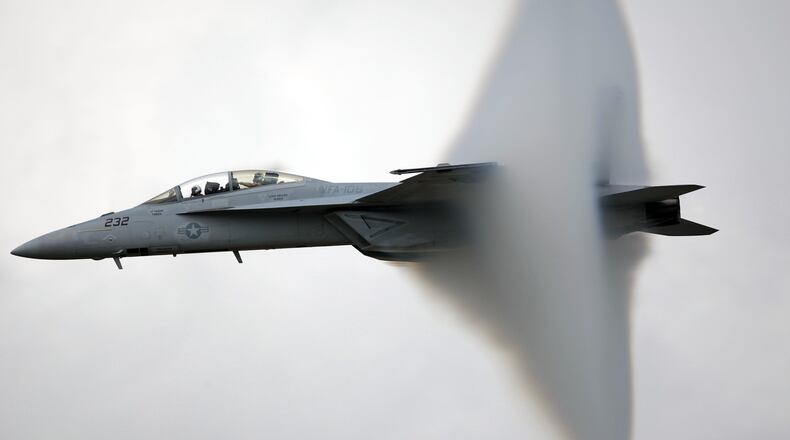“We’re not certain that the service branches are adequately identifying the source and cause fast enough for us to be able to remedy them, putting more people at risk,” Turner said in an interview. “…I think all the service branches have been too slow to respond. These are alarming trends.”
RELATED: Navy aviators faced Arctic-like temps in mishap; congressman wants answers
Turner cited a 40 percent rise in military aviation mishaps between 2013 and 2017. The Military Times, an independent newspaper, reported 133 service members were killed in mishaps during that time in fighter, bomber, helicopter and cargo aircraft, and the accident rate for some jets, such as Navy and Marine Corps F/A-18s, had doubled.
The congressman pointed to some studies indicating the rise in the accident rate showed sequestration, or automatic defense budget cuts, which restricted training and maintenance, could be tied to the increase in mishaps.
Separately, physiological incidents, or a loss of oxygen in the cockpit, have been on the rise in training and fighter jets in the Air Force, Navy and Marine Corps.
RELATED: Wright-Patt testing pilot device to detect oxygen loss in cockpit
Concerned aviators have refused to fly in some instances, Turner said. Both the Air Force and the Navy temporarily grounded training aircraft while looking for the cause. “It’s making an unsafe environment for pilots,” he said.
“Every (committee) hearing that we have, we’ve gone to military bases and talked to pilots, we become more and more concerned that the service branches don’t have an answer,” he said.
Investigators have investigated hypoxia-like incidents in the Navy’s F/A-18s, T-45 training jets, and the Air Force’s F-22, F-35 and T-6.
Through mid-March, the Navy has reported 716 physiological episodes in aircraft since 2010, the service branch said. Within the last five years, the Navy reported nearly 400 incidents in variants of the F/A-18; another 88 in the E/A-18; 117 in the T-45; 42 in the T-6; and 14 in the F-35B/C, data shows.
The Air Force reported 12 incidents in the T-6 from March 1 through April. Additional information was not immediately available.
The 711th Human Performance Wing hunted for clues to the cause of hypoxia-like incidents reported in F-35A last year at its On-Board Oxygen Generation System Laboratory at Wright-Patterson; and Wright-Patterson researchers are testing a device T-6 pilots wear behind their ear to warns them in advance of a potential physiological incident.
FIVE QUICK READS
Wright-Patt researchers hunt for clues in F-35 stealth fighter issue
PHOTOS: How the Memphis Belle came back to life
Wright-Patterson to get new base commander
About the Author
